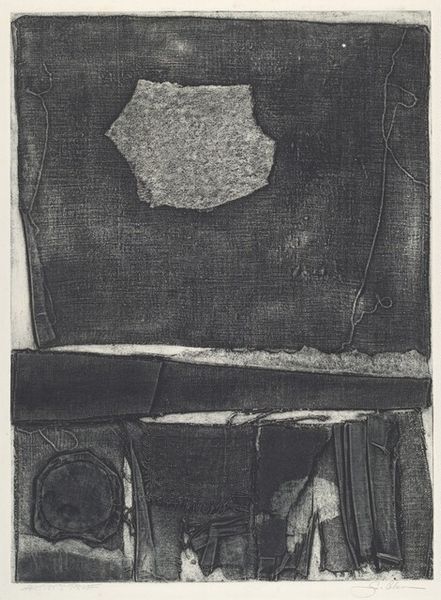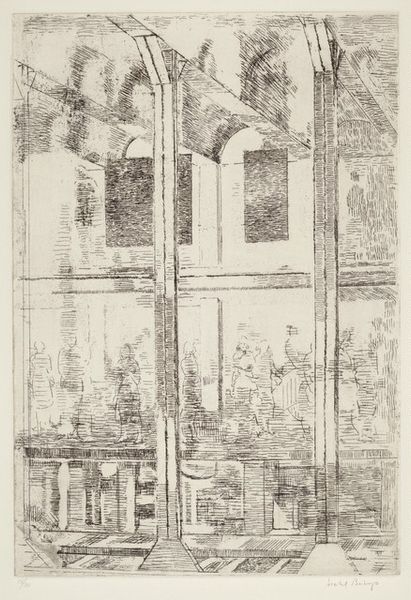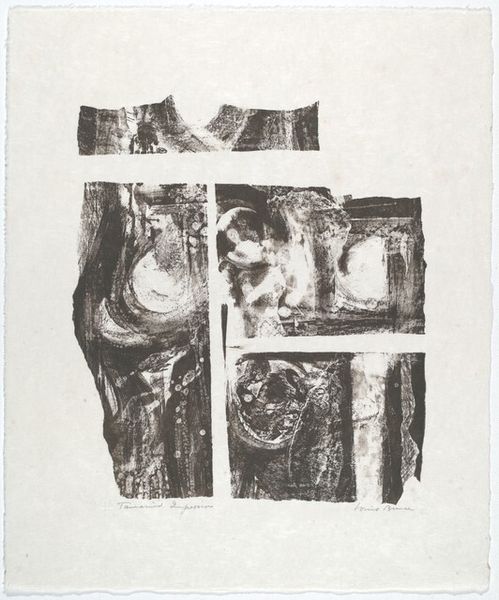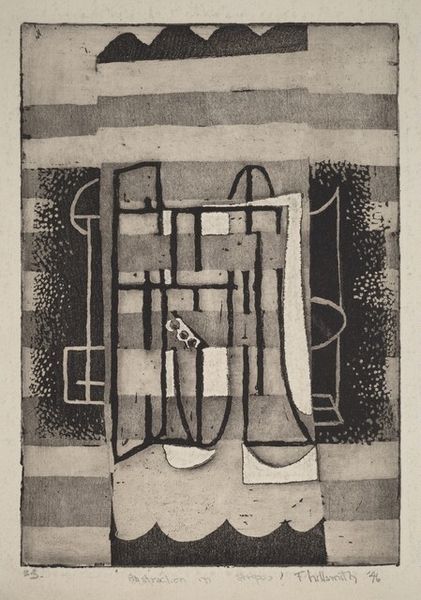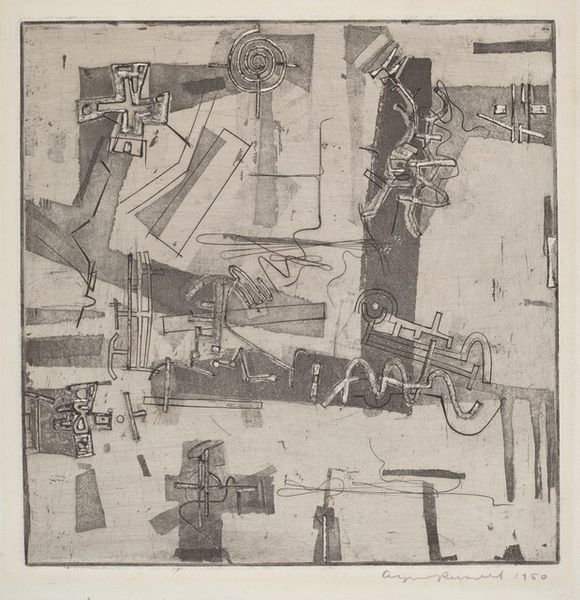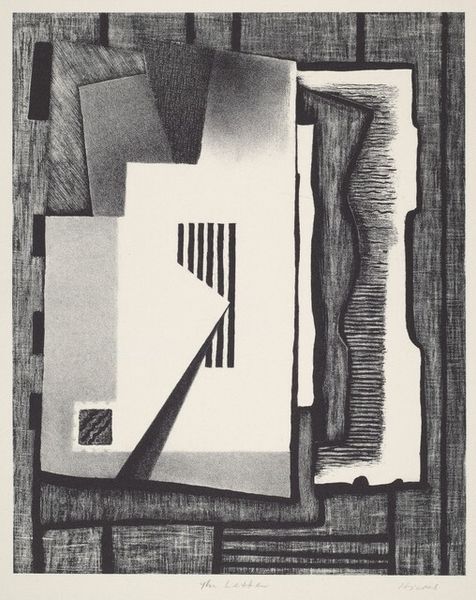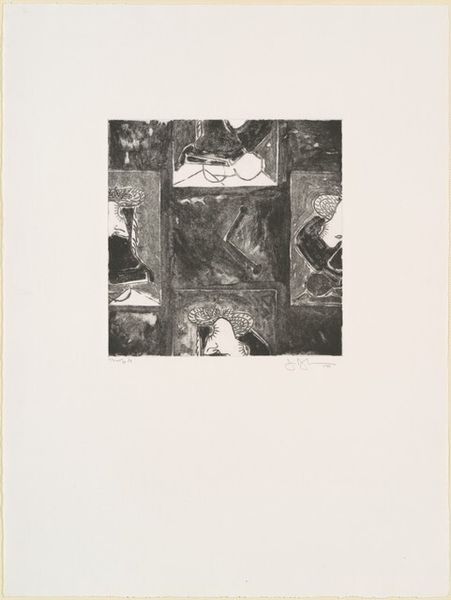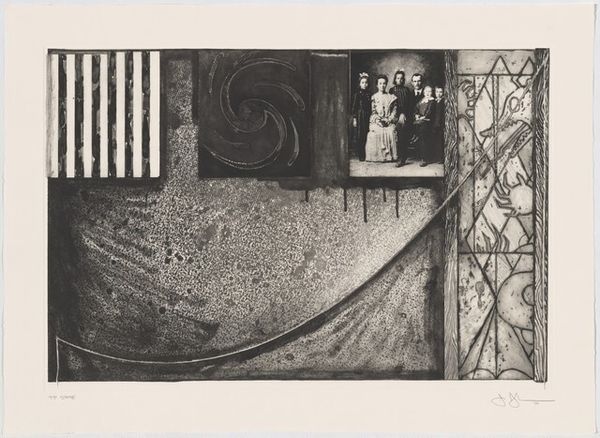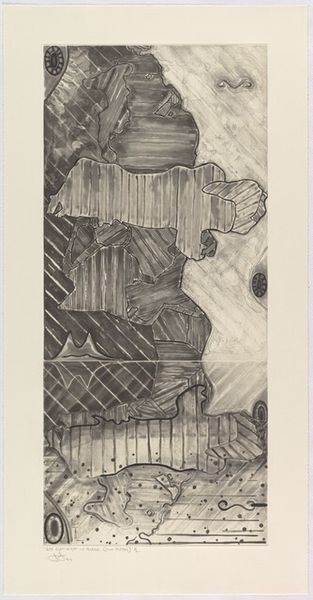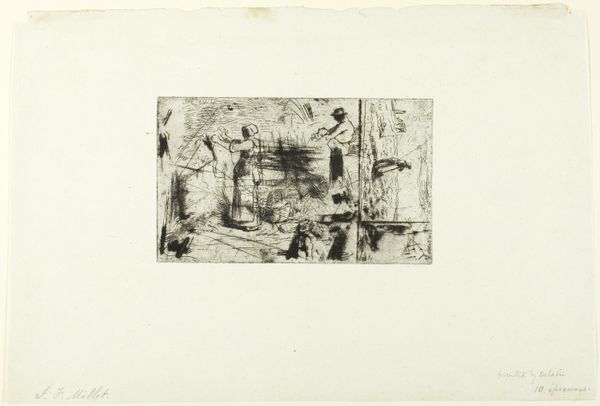
print, etching
# print
#
etching
#
geometric
#
abstraction
Dimensions: plate: 40.5 x 30 cm (15 15/16 x 11 13/16 in.) sheet: 47.3 x 35.9 cm (18 5/8 x 14 1/8 in.)
Copyright: National Gallery of Art: CC0 1.0
Curator: Looking at this print, I’m immediately struck by a sense of melancholy. The textures, the layering... it feels like sifting through fragmented memories. What’s your take? Editor: It's powerful, certainly. This etching, "The Window II," was created by Clinton Adams in 1959. I see it as speaking to the period’s anxieties surrounding industrialization and urban decay, specifically focusing on the domestic sphere. Windows often symbolize transition or a boundary between private and public life. Curator: Oh, I like that—a boundary. The window frame almost feels like it’s collapsing in on itself. Those sharp angles… they evoke a feeling of unease. But within that, there are these beautiful, delicate textures. See how the light catches in some areas, creating a ghostly luminescence? Editor: Precisely. And consider the etching process. The corrosive action of acid on metal is essentially a controlled destruction, echoing the broader societal anxieties around progress. This particular approach speaks to how post-war artists grappled with themes of alienation and loss through geometric abstraction. Curator: It's like the geometry is trying to impose order on something inherently chaotic. And that lower section… a hazy mirror image? Or is it a premonition? Editor: It adds to that sense of duality, certainly. Consider too, who has access to 'the window' – who benefits from seeing, and who remains unseen, veiled by these semi-transparent planes? There's a complex power dynamic at play here. Curator: That makes me think of personal narratives getting obscured, or maybe suppressed by larger historical forces. Like whispered stories behind frosted glass. Editor: Absolutely, it is this type of image that resonates and raises vital dialogues around identity, societal forces, and what it truly means to witness and be witnessed. Curator: It is a really thoughtful approach—and maybe this makes it more than an artwork, it's a critical space where the echoes of a conflicted time can still provoke conversation. Editor: That’s wonderfully put. It encourages to look and ask again about history.
Comments
No comments
Be the first to comment and join the conversation on the ultimate creative platform.

